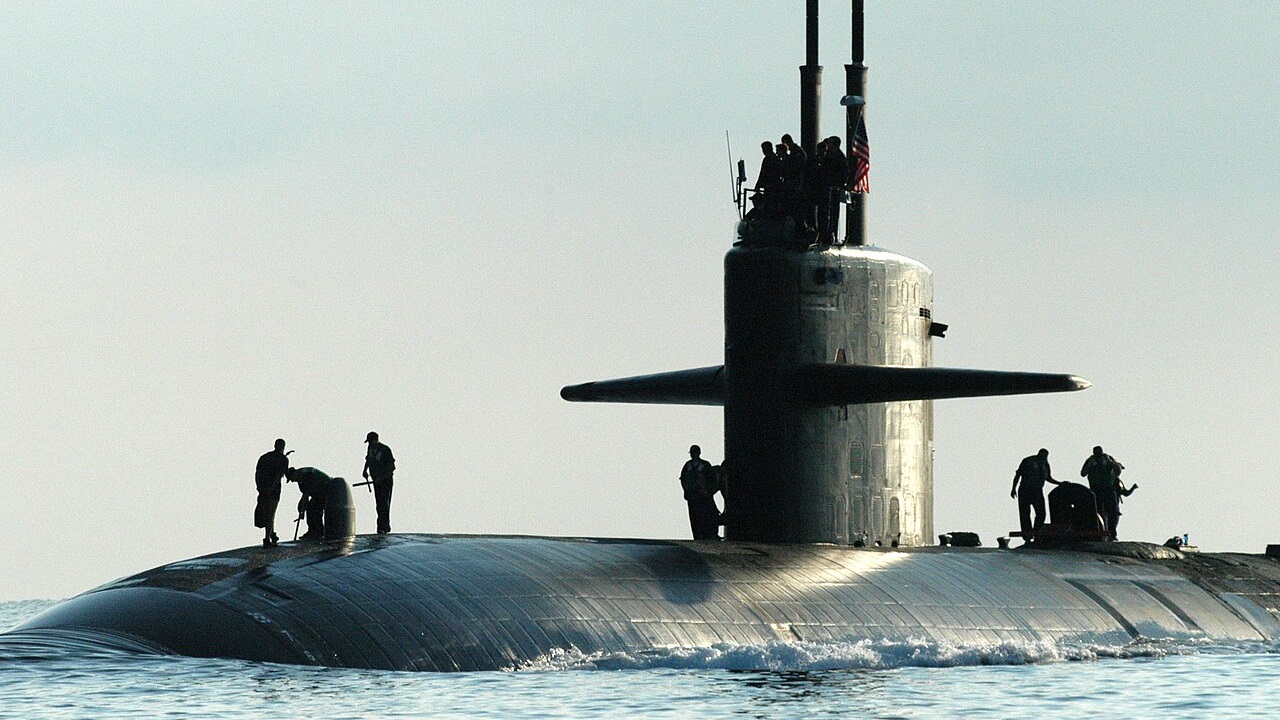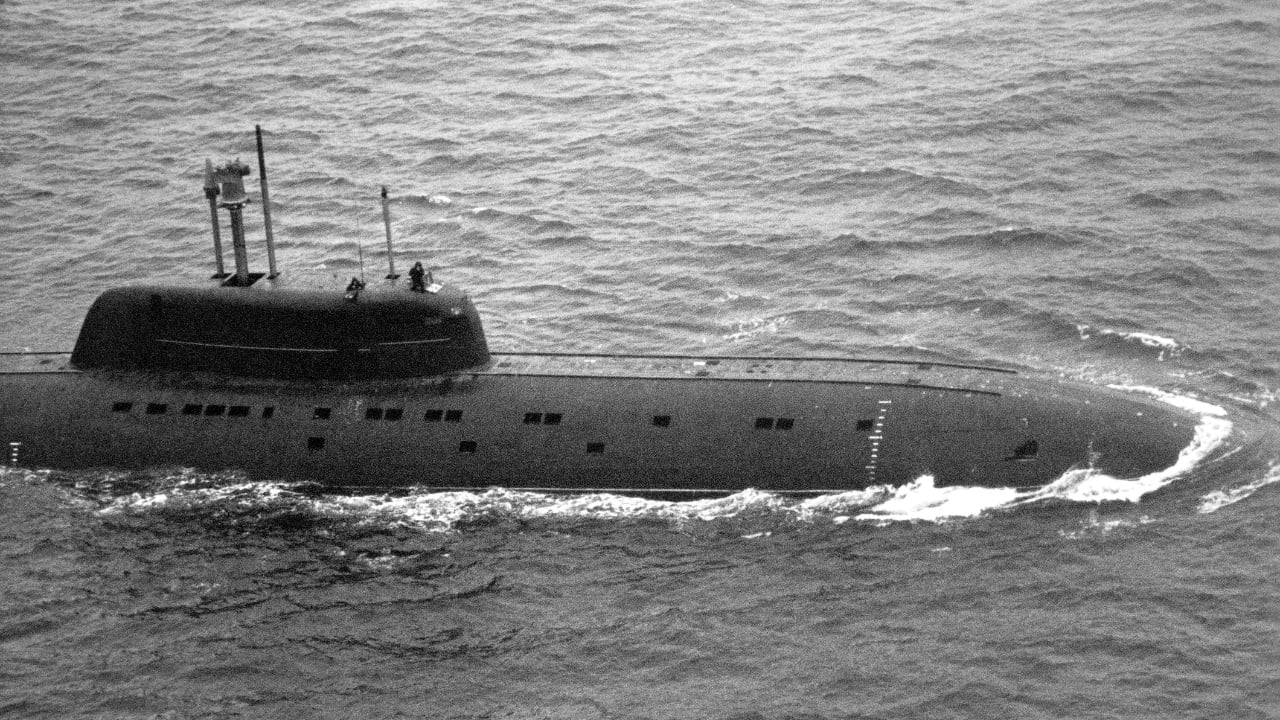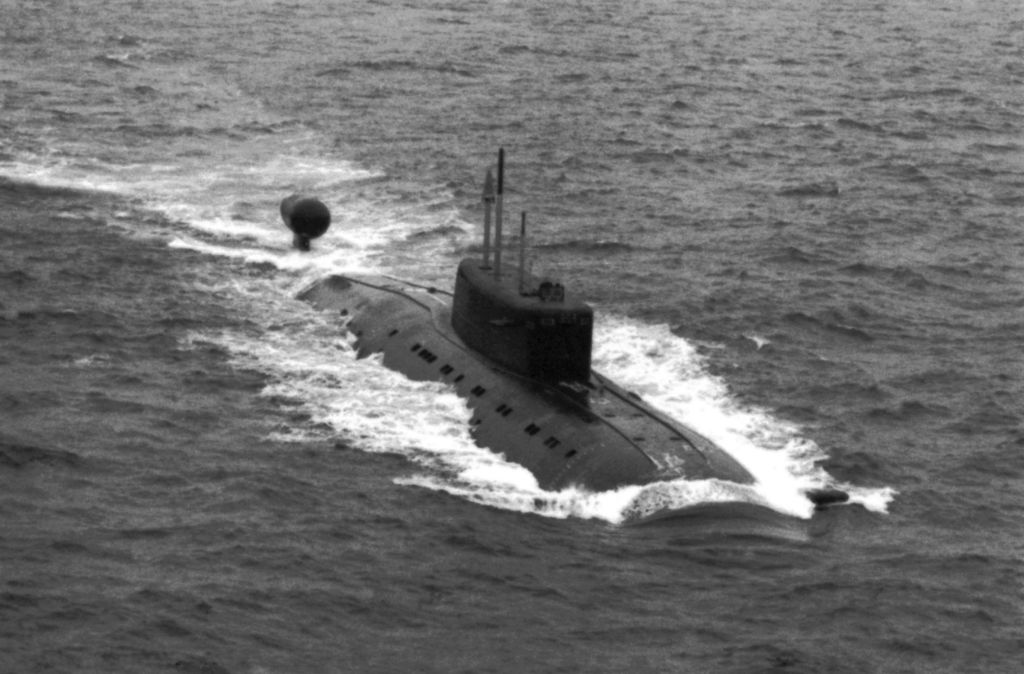What you need to know: In February 1992, the US Navy Los Angeles-class submarine USS Baton Rouge collided with a B-276 Sierra-class submarine of the Russian Navy Kostroma near the Russian Severomorsk naval base in the Barents Sea. Both submarines sustained damage, but there were no casualties.

-The incident revealed continued US surveillance of Russian naval activities despite the end of the Cold War, leading to diplomatic tensions.
– Unusually, the Pentagon acknowledged the collision, which sparked discussions between US Secretary of State James Baker and Russian President Boris Yeltsin. TheBaton Rouge was subsequently decommissioned untilKostroma was repaired, her crew marked the event by painting a “kill” symbol on the conning tower.
When a US and Russian submarine collided: The 1992 incident explained\
forty years ago The Hunt for Red October hit the bookshelves, becoming a hit that even earned praise from Ronald Reagan. By the end of the 1980s, Tom Clancy had become one of the most famous contemporary military writers.
Movie version of The Hunt for Red October came out six years later in 1990, and both the book and the film featured a memorable conversation between the Soviet ambassador and the US national security adviser, with the former explaining that a Soviet submarine was late and missing.
The answer: “Lost another submarine?”
This short joke has become a popular social media meme that serves to highlight the ineptitude of the Russian Navy today, including the fact that its only aircraft carrier, the Admiral Kuznetsov, has been in dry dock for years and that the flagship of the Black Sea Fleet Moscow was submerged by Ukrainian forces in April 2022. Clancy sadly passed away in 2013, so he did not live to comment on the loss of the mighty warship.
Yet there was hardly anything quite as pleasant as the exchange The Hunt for Red October about what happened in February 1991 after a US Navy attack submarine collided with a Russian submarine, sparking an international incident. It was a situation that Tom Clancy’s President Jack Ryan had never faced!
Flashback: February 11, 1992
The Cold War had ended as the Soviet Union had ceased to exist only months earlier, but the United States Navy continued to track the movements and communications of the Russian fleet. The Naval Service went to great lengths to even tap Russian communications cables as part of Operation Sacred Stone.

Such activities may not even have been noticed, but that changed on February 11, 1992, when an incident occurred that even Tom Clancy could not have dreamed of.
The United States Navy’s Los Angeles-class nuclear attack submarine USS Baton Rouge (SSN-689) closely eclipsed the Russian Navy’s Sierra-class (titanium-built) B-276 Kostroma near Russia’s Severomorsk naval base on the Barents Sea coast when the two submarines collided.
Harrison Kass, writing for The National Interest, explained how the incident unfolded:
“At 8:16 p.m. local time, in international waters approximately 12 miles off the coast of Kildin Island, the Baton Rouge collided with the Russian submarine B-276 Kostroma. It is still debated exactly what happened. The American press claimed that the Baton Rouge was monitoring wireless traffic between Russian bases, but the Russian press claimed that the two submarines were engaged in a game of cat and mouse.”
This game of cat and mouse led to a collision
It is now undisputed that contact was lost just before the collision, as can happen with fast-moving submarines that operate underwater. The Russian Navy’s 9,000-ton Sierra-class boat rammed the USS Baton Rouge as it prepared to set sail about 12 miles offshore. Both boats sustained damage, but luckily there were no casualties.
The American boat actually suffered only heavy scratches and a ruptured ballast tank, but it could have been significantly worse, since the American submarine had only one hull. If it had ruptured, the submarine would have taken on water and this could have resulted in a disaster – possibly costing the lives of the crew. Damage to Kostroma it was a little more substantial and its sail was jagged at the front.
Both submarines were able to return to port under their own power.

Nautical Fender Bender became a political disaster
The incident was essentially little more than a fender bender—yet it was still a major political disaster for the United States, as it exposed the fact that Washington still closely monitors Russian military activity despite the collapse of the Soviet Union and the end of the Cold War.
Moreover, although the collision took place in international waters, Moscow also believed – and rightly so – that the US activity was illegal.
At first, the US even tried to deny that they were involved in tracking the Kremlin boat, but the Russian Navy countered that the two submarines were involved in the aforementioned game of cat and mouse. Further investigations by third-party analysts tended to support the Russian claims.
Accidents will happen – but actually admit it?
What makes this story remarkable, even if it lacked the suspense of Clancy’s page-turner, is that we know with absolute certainty that it happened. The collision was certainly an accident and the US submarine had no intention of hitting the Russian boat. Actually the USS Baton Rouge even went around to see if the Russian submarine needed help.
In a surprise move, the Pentagon acknowledged that a collision had occurred, which was against official policy at the time.
The incident proved significant enough to prompt a meeting between then US Secretary of State James Baker and Russian President Boris Yeltsin to discuss the situation. No official transcript of what was said has ever been released, and it’s doubtful the conversation will ever become public. But the U.S. Navy has since suspended certain specific underwater activities near Russia’s naval bases — and that has included tapping undersea cables or establishing wireless communications.
The Aftermath
The Russian fleet was able to repair Kostroma by June 1992 and she was returned to service, later receiving a major overhaul in 2005 – although the boat is now in the reserve fleet.
In contrast, the USS Baton Rouge returned to the United States and the decision was made to scrap the boat as it was already scheduled for refueling. She became the first Los Angeles-class submarine to be decommissioned and struck from the Naval Vessel Register. The Russian Navy apparently took note of this fact, as sailors on the Kostroma painted kill marks on its conning tower to mark the “defeat” of the USS Baton Rouge.
Not even the late great Tom Clancy could have written a more fitting ending.
Author experience and expertise: Peter Suchu
Peter Suchiu is a writer from Michigan. He has contributed to more than four dozen magazines, newspapers and websites with over 3,200 published articles in a twenty-year career in journalism. He writes regularly on military technology, firearms history, cyber security, politics and international affairs. Peter is also a Contributing writer for Forbes and Clearing jobs. You can follow him on Twitter: @PeterSuciu. You can email the author: Editor@nationalinterest.org.
Image credit: Creative Commons and/or Shutterstock.